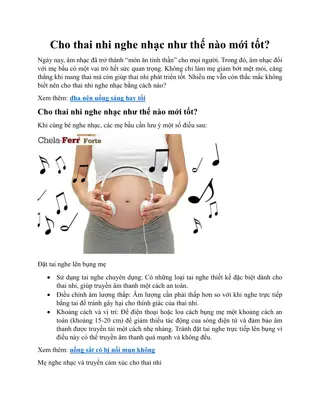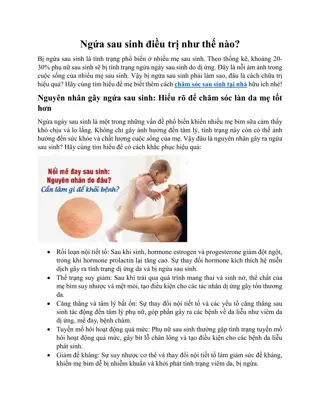
Qigong
Explore the gentle movements of Qigong, a practice that enhances fluid movement in the body, builds internal power, and promotes overall well-being. Learn about breathing techniques, tapping exercises, and how to create a calming atmosphere to fully experience the benefits of Qigong.
Download Presentation

Please find below an Image/Link to download the presentation.
The content on the website is provided AS IS for your information and personal use only. It may not be sold, licensed, or shared on other websites without obtaining consent from the author. If you encounter any issues during the download, it is possible that the publisher has removed the file from their server.
You are allowed to download the files provided on this website for personal or commercial use, subject to the condition that they are used lawfully. All files are the property of their respective owners.
The content on the website is provided AS IS for your information and personal use only. It may not be sold, licensed, or shared on other websites without obtaining consent from the author.
E N D
Presentation Transcript
QIGONG What is it? Qigong (alternatively spelled chi gung or chi kung) is a form of gentle exercise composed of movements that are repeated a number of times, often stretching the body, increasing fluid movement (blood, synovial and lymph) and building awareness of how the body moves through space. When you practice and learn a qigong exercise movement, there are both external movements and internal movements. These internal movements or flows are called neigong or "internal power". These internal neigong movements make qigong a excellent health and wellness practice Qigong is also useful on the spiritual level. Feeling the energy of your body makes it possible for you to feel and understand the energy of your thoughts and emotions, and this leads to helping understand the energy of the spirit. According to taoism, every human being contains "the three treasures" jing (sperm/ovary energy, or the essence of the physical body), chi (energy, including the thoughts and emotions), and shen (spirit or spiritual power). Wu (emptiness) gives birth to and integrates the three treasures.
Things to remember To prepare, create a calming atmosphere by dimming the lights and possibly heating essential oils in a diffuser. Choose some relaxing music. Protect your back. Sit facing the learner and if they are in a wheelchair, grip it with the inside of your knees. If the learner is in a standing frame, then stand facing them. If they are on a mat, then kneel or sit beside them depending on what is most comfortable. If the learner has very high tone, add a little shake to the movements to help loosen their muscles. As you travel through the following steps, remember that qigong is a process of building awareness. However you are comfortable doing the routines is what s right for you at that time. Stay focussed on your learner, keeping talking to a minimum.
Breathing Breathing techniques are a way to stimulate qi energy. They infuse the body with qi and help focus meditation. Buddha s breath: Start by listening to the music and becoming aware of your own body and your own breathing. Inhale, extend your abdomen, filling it with air. When you exhale, contract you abdomen, expelling the air from the bottom of your lungs first and then pushing it up and out until your abdomen and chest are deflated. Now try holding your hands just in front of your abdomen, not quite touching it. Move your hands away from your abdomen as you breathe in and then back as you breathe out. Do this 3 or 4 times. As you breathe in and out, imagine inviting your qi energy to flow into you. Use your mind to invite the qi to flow; you want to guide the flow, not tug at it or push it. Next, place the learners hands on their abdomen, with your hands on theirs, so that they can feel their breathing. Tune in to the rhythm of their breathing. Once you ve done this, you can start to support them to move their hands out away from their body as they breathe in and then slowly return their hands to their body as they exhale. Help the pupils feel their breath by placing their, or your, hands on their belly as it rises and falls. Then sit and hold hands or be close together and breathe together.
Tapping Rub learner s hands together then your own hands together, generating heat and energy. Hold the learner s hands between yours so they can feel the heat. Support the learner to lift their hands above their heads in a relaxed, floppy fashion. Support them to tap gently on their head and face. You can also gently rub their cheeks in small circles if they are happy to let you. Next, support them to tap down their limbs and torso, you can tap the parts they can t reach. Brush, then shake off the energy from your hands and theirs when done.
Gentle Sway Move both of your arms from your shoulders in a gentle swinging motion. For the full pose, the motion itself is initiated from your waist: twist from the waist as though your torso were a washcloth that you were wringing out. Don t twist from the knees or you may harm them. Twisting from the waist provides a massage to the internal organs and provides you the full benefits of the exercise. If seated in a chair, the learner can be supported to move their arms from one side of their torso to the other in a gentle sweeping motion. If standing, support them to move their arms side to side across your torso, and then back to the front. For the full pose: keep knees slightly bent. let your hips sway. allow your mind to clear. At first, focus on the release of unnecessary and unconscious stress. after several weeks, you may shift your focus so that you think only about the swaying of your arms and the motion of qi energy.
Accordion hands This exercise cultivates qi, builds awareness, and sensitizes yourself. 1. Close your eyes halfway. Place your hands, palms down over the learner s hands. Their hands should be comfortably in their laps or on their knees. Clear your mind and concentrate your attention on your palms. 2. Allow your breath to become slow, easy, without force. In a way, you are creating the very lightest trance. 3. Support the learner to bring their hands together, palms touching and fingers pointing upward. The palm chakras, called laogong, located in the center of the palms, should be touching. These chakras are areas where qi can be felt emanating from the body. 4. Slowly move your hands with the learner s apart, keeping the palms facing each other. When they are about 12 inches (30 cm) apart, slowly move them together using the least amount of physical effort possible. You will be compressing the air between them like an accordion would. Pause and notice the energy between your hands before they touch each time. 6. Feel a warm or tingling sensation at the laogong points on your palms. 7. Move your hands slowly back and forth, varying the range of the bellows. Repeat the accordion technique in different directions: horizontally, vertically, and diagonally.
Making the point Using your index finger is a powerful way of directing qi energy. Try this yourself first before supporting the learner to do it. If you are right-handed, use you right index finger; if you are left-handed, use your left index finger. Point it directly at the flat palm of your other hand. That hand should be perpendicular to the floor with your fingers pointing straight up. Use your index finger like a paintbrush to swab back and forth across your palm. Begin with your fingertip about 8 inches (20 cm) from your palm. Slowly move it closer and farther away, swabbing all the time. You may feel a tickling sensation, a cooling, or a warming of your palm. Support the learner to do the above either pointing with their own finger or by the adult pointing at the learner s palm with their finger. You may like to do this on other areas of their body as well.
Pumping the qi This position pushes the qi down. Your posture goes from a slumped, gorilla-like stance to an upright extended pose. Support you learner to bring their elbows and hands up to head height parallel to the floor, palms facing down. You will find they may be hunching forward slightly. As your hands support theirs to push flat down, breathe out, your spine and head straighten upward. Then as you allow the qi to flow back upward, your hands rise, elbows bent and palms parallel to the floor and breathe in. Your shoulders hunch. Repeat this six or seven times, inhaling as your hands come up and exhaling as your hands go down. If this is too tricky, simply raise arms above body and back down again.
Deep pressure push Start with pupil s hands on their knees. Support the pupil to lift their arms above their head and stretch for a count of 3, then bring their hands down to rest on the top of their head, elbows out. Support them to press down on the top of their head for 3, then stretch up again and return hands to knees. Repeat two more times.
Shake off Use your hands to brush the energy off the learner using sweeping motions and then shake the energy from your and their hands. Thank them for joining you in Qigong.






















